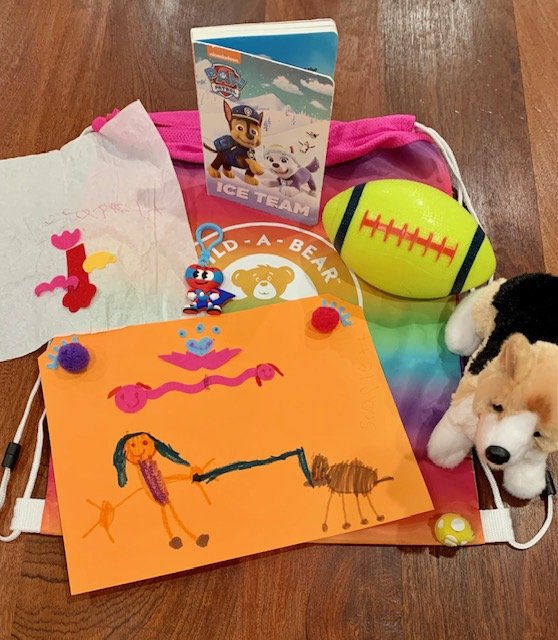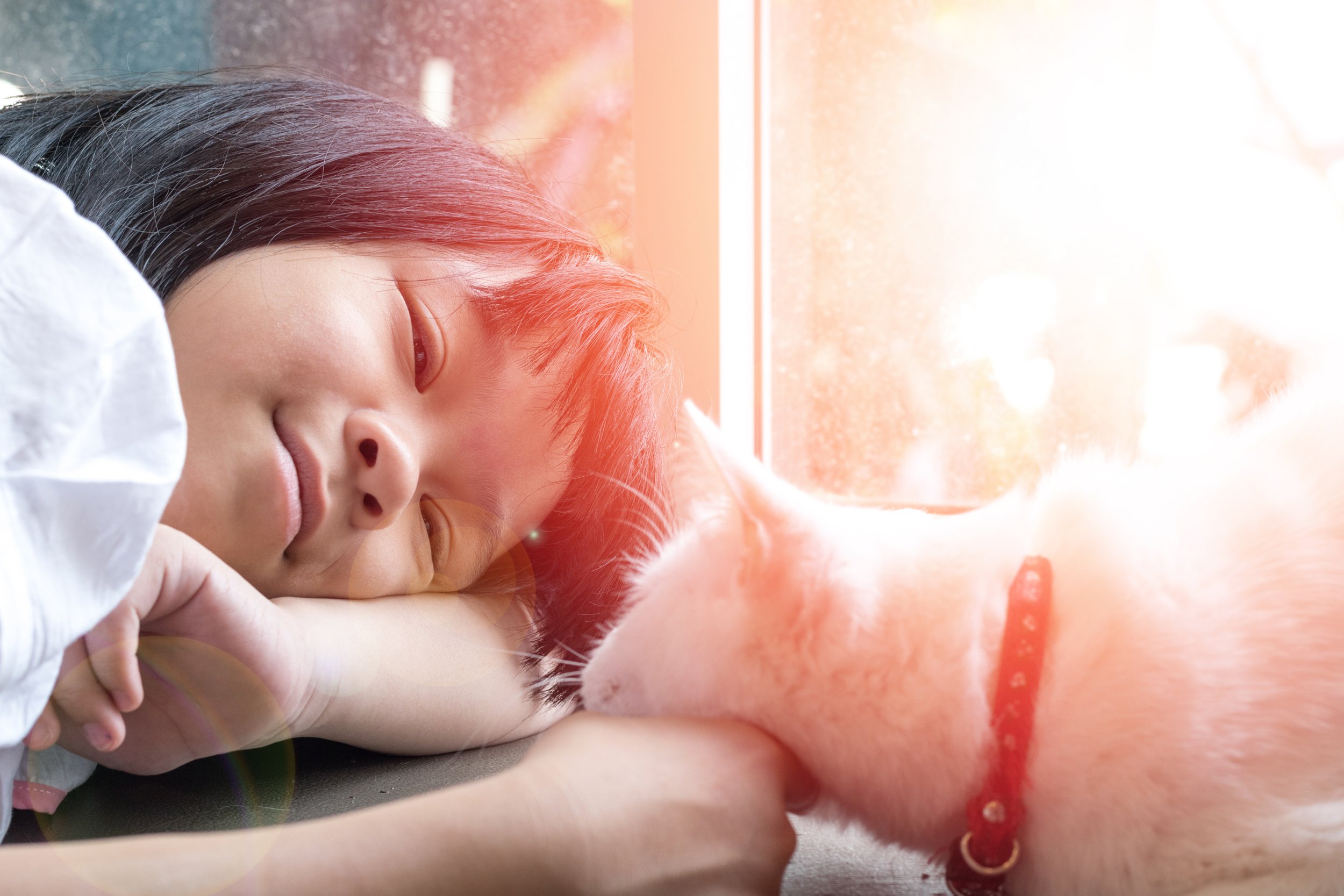From a hospice vet: Helping children through pet euthanasia
Kids are the best. They are such open, honest, resilient little beings. It is easy to forget that we can learn from them, if we really stop and listen to what they have to say! When thinking about euthanasia and death of a beloved family pet, it can be instinctual to try to hide the sadness and pain from our children. It is our job to protect them, right? I will tell you, though, that having in-depth discussions with our kids regarding death can be incredibly valuable. Our pets are family members, and for children, this is no different. Childhood bonds formed with a pet can be some of the first and some of the strongest connections we have to another living being. Allowing our children the option to be involved with making decisions and the option to be present to say goodbye to a furry family member can be a beautiful thing. These experiences and moments can shape the way our children process death and grief moving forward into adulthood. Here are just a few tips and stories to consider when thinking about how your child may handle the death of a faithful friend.
Be Open and Honest:
The language you use matters. As adults, we tend to prefer softer language to describe illness and death. With children, however, it is best to avoid euphemisms such as “put to sleep” or “passing” as these can be confusing and misleading. Be direct and clear and use the terms “death” and “died”. Allow your child to be part of the conversation, appropriate to their age and development, surrounding their pet’s illness, treatment, and quality of life. Allow your child to be a part of the decision-making conversation for euthanasia. Just like adults, kids benefit from having the opportunity to process the situation ahead of time (if time allows) and to say goodbye in their own personal ways.
Tales From A Hospice Vet:
One dreary fall morning, I arrived to help a family say goodbye to their 13 year old chocolate lab, Bali. What a special girl this pup was! She had traveled all over the country with her pet parents and was there for all of those big milestones including their wedding, moving into a forever family home, and the welcoming of children into the house. When I arrived, Bali (in true chocolate fashion!) began wagging her tail and did her best to get up on wobbly legs to greet me. Of course, her pet parents were devastated with the decision at hand and we all did our best to give Bali a calm, loving presence.
As we began talking, I learned how the family's 5 year old daughter (who chose to not be present) had been preparing for this day. Her parents had clearly included her in discussions about Bali and her declining quality of life. They had explained that Bali’s body was aging and giving out on her. She was no longer able to join the family in all of the activities that brought joy. She was sick and was not going to get better, even with medicines. This was no one’s fault. This was part of nature and part of life. Part of loving and caring for our pets includes making sure they are never in unmanageable pain or discomfort.
This child took the information and began preparations all on her own. She put together a “Goodbye Bag” for her sweet dog to take with her on the journey across the rainbow bridge. So much thought and love went into this grief process! The bag included a tennis ball, slices of cheese, a book for the child's deceased grandpa to read to Bali, and toys for Bali to give to a beloved cat who had died in a previous year. Seeing this brought tears to my eyes! How special for this kiddo to be able to participate in decisions and make preparations for her best friend. Although none of this experience was easy, it was an experience that can be taken into adulthood as a way to integrate loss with life and pain with love.
Show Your Emotions:
Death is a sad thing. There is nothing we can do to make it not hurt. But we can use these opportunities to show children that grief and sadness are natural emotions and not something to bury, hide, or numb. Let your children see you cry and feel sad. And let them know that it is ok to feel sad or angry or any number of emotions they may have. Do not disenfranchise grief by talking about how brave it is not to cry or how they will “get over it”. (*note: prolonged adverse behaviors may require the help of experienced grief counselor)
Be Ready for All Kinds of Questions:
Answer questions as directly and simply as possible for the child’s developmental stage. Demystify death and alleviate any possible guilt associated with death.
Tales from a Hospice Vet:
I arrived at Fae’s house on a Friday evening at the tail end of a colorful fall sunset. I was met at the door and lead into the living room where a sweet greyhound lay resting on her bed near the hearth. She was too ill to attempt getting up. What intelligent and expressive eyes she had though! Such a beauty! The family’s young son was present and clearly upset about the situation. We sat down and began chatting about what a wonderful job he had done helping his parents to take care of sweet Fae. Mom and Dad had already been including their child in discussions even before this day.
“Fae's body is extremely sick and has stopped working. This is something that happens to all animals despite how much we love them. At some point, all animals die. This is no one’s fault.”
“How does she die?,” he wondered.
I explained “I will give a medicine, just for pets, that will let Fae die in a peaceful and painless way.”
The child went on to say “ok” then asked if he could take pictures of Fae with his dad’s phone. As I was talking about the sedation medicine and opening my bag, the child exclaimed “Wait!! I need to put hearts on my pictures.” He then opened the phone back up and proceeded to add filters and hearts to the pictures that he had just taken. “Ok” he finally said, teary eyed and satisfied with the photos.
His mom then gave him a choice to stay present while the medicine was given or to go into the basement to be with his grandma and grandpa who were there to help. He decided to go into the basement but did come in and out of the living room as Fae became sedated and drifted off into sleep. More questions would follow “Why is she snoring?” and “Is she dead now?” and “How do you give her the medicine?”
During administration of the second medicine that would allow Fae a gentle and tranquil death, the child opted to stay with his grandparents in the basement. This also allowed his parents to focus on their dog of 13 years who had gone through so much of life with them. The boy did return to see Fae following the euthanasia and came out to my vehicle to help with the send-off. Everyone hugged Fae as she lay covered under her blanket in the back of the vehicle.
As I was walking to get into the driver’s seat he exclaimed, smiling and teary-eyed, “I did great!” He then proceeded to give me a high five. Truly the best ending to a euthanasia visit that I have ever had.
Be ready to answer questions about aftercare. “Where does Marshmallow go after he dies?” is a common question and concern. You can include your own cultural and spiritual beliefs here as you see appropriate. As far as the physical body is concerned, we again have an opportunity to explain truthfully and in an age appropriate manner.
Perhaps you are choosing a home burial: “Marshmallow will be buried at home, deep into the ground, and we will be able to visit his grave any time”. If choosing cremation, you may explain “Marshmallow will be taken to a pet crematorium and placed in a specially heated room where his body will be turned into ashes.” You may need to remind your child that this process does not hurt the pet. “This is a peaceful process, and remember, Marshmallow’s body is no longer alive and he does not feel any pain.” Dependent upon your aftercare wishes, you can explain that ashes will be scattered at the animal cemetery or that your family will be able to have the ashes to keep, scatter in a favorite location, or bury.
Involve Kids in Planning a Memorial:
Planning a memorial can be a useful way to help children (and ourselves!) grieve. Remind children that a beloved pet will always be in our memories. Ask them what they may like to do to do to celebrate the pet’s life. Children may want to hold a ceremony that involves the entire family. They may wish to write letters to their pet or may want to draw a picture of their favorite memory of their pet. There are many personal ways families can memorialize their pets!
Tales from a Hospice Vet:
I arrived at Dolly’s house on a snowy Sunday morning. Two parents along with their three daughters, all in pajamas and slippers, were present in the living room surrounding their beloved pup. There was also a newborn napping away in his bassinet. The love and sadness in the room was palpable. The girls kept repeating “We love you, Dolly!” “You are the best dog, Dolly!”
I commented that Dolly was so very lucky to have gotten to take care of such amazing kids and proceeded to explain the sedation and medications that would allow for Dolly to have peaceful and pain-free death. Once Dolly was sleepy from the sedation, we decided to make keepsake paw impressions. The girls watched as I positioned Dolly’s paw in the foam material to make each of them a print to keep in their rooms.
I reminded everyone in the room that they are free to do what their body and heart needs to do during the euthanasia. Crying or not crying is completely natural. Getting up and walking around, or even leaving the room, would be absolutely fine. I explained that there is no right or wrong way to be “you” during these tough moments. The children remained present, at various distances, for the second medication and watched as Dolly took her last breaths.
Afterwards, we got Dolly bundled on the stretcher and tucked her in with a pink and yellow blanket. Through tears, each child placed a letter with a drawing between Dolly’s front paws to go with her on the final journey.
As all children are different, conversations can be based on a variety of factors including personality, age, and cultural beliefs to name a few. Here is a link to a wonderful guide from The Ohio State University Veterinary Medical Center describing grief by developmental stage more in depth:
All home euthanasia visits are sacred and special to me. What an honor it is to bear witness to so much love and so many beautiful lives. Visits that include children hold their own special place in my memories. They definitely have a way of keeping all of us grown-ups honest and grounded. ❤️
Yours in Caretaking,
Dr. Melissa





